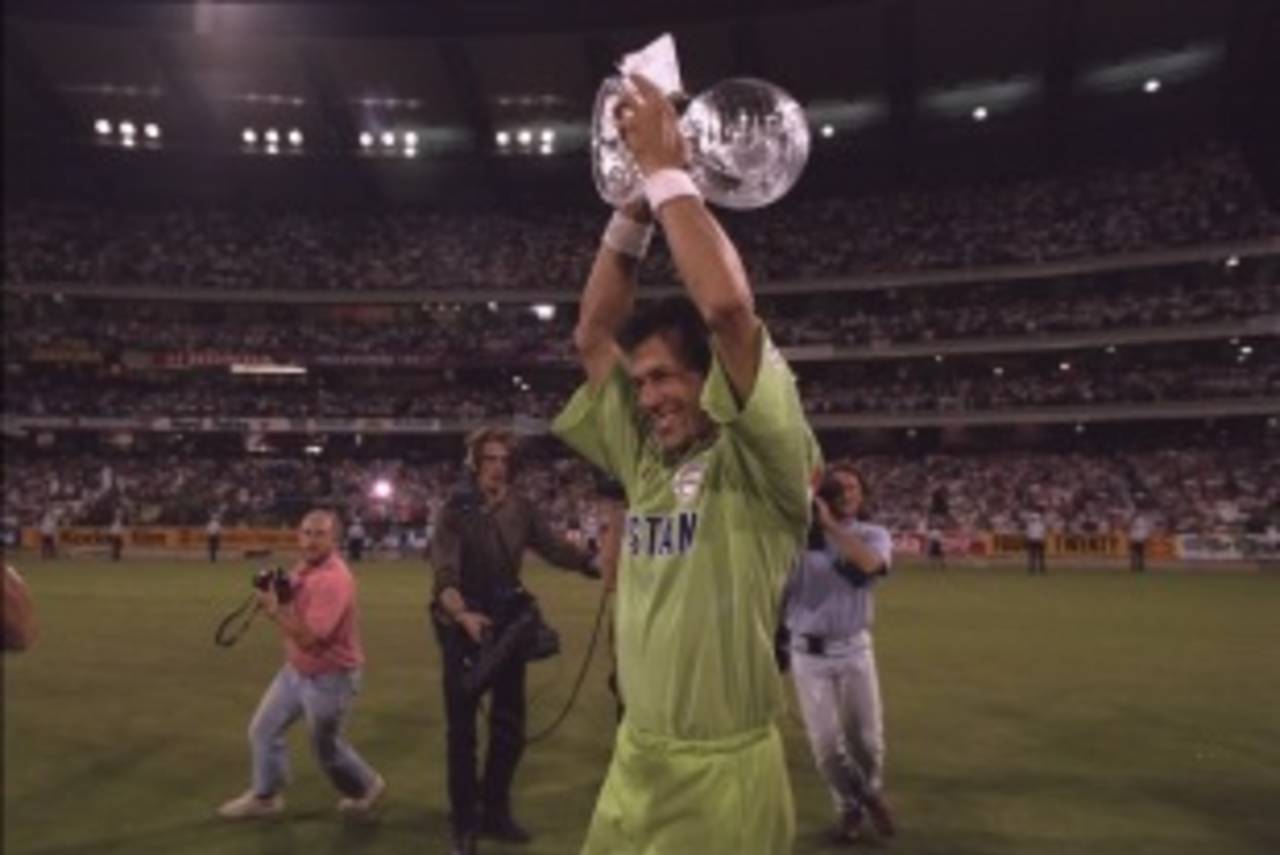Sometime ago I had posted
a piece on Duleep Mendis and Roy Dias on the
Different Strokes blog, motivated by a desire to shine a spotlight on memorable feats in cricket, which I felt hadn't received their due. I hope to keep doing that here at the
Pitch, and in a similar vein, I want to talk a bit about cricketers who had only walk-on parts on the world's cricketing stages, but for some reason or the other, managed to make themselves memorable to me.
My first entry in what will, hopefully, be a long roll of honour, is the
Pakistani left-arm quick Azeem Hafeez. His Test statistics are unremarkable: he played 18 matches between 1983 and 1985 and took 63 wickets at an average of 34.98 and a strike rate of 69. Azeem perhaps played only because the great Imran Khan was on the mend; he left because another great, Wasim Akram, had given notice of his potential, and more importantly, was Imran's new blue-eyed boy.
Why then, do I remember Hafeez? What makes him so enduring in my cricketing imagination? For two reasons, neither of them particularly earth-shatteringly interesting or important, but for a teenage cricket fan they added up. For one thing, he was replacing Imran in a series against India, and my curiosity was piqued: who was it, precisely, that was supposed to fill the great man's shoes in this clash of arch-rivals?
And secondly, reductive as this will sound, because he was distinguished by a small handicap: a pair of missing fingers on his right hand. Indeed, it might be the only reason that fans remember him today, including Pakistani ones. This pair of missing digits was part of every introduction afforded to Hafeez in the print media, and it willy-nilly made him into a novelty in my mind.
As I watched the first Test in Bangalore with my aunt for company (women did watch cricket before the IPL), I brought up Hafeez's handicap. She replied with a one-word description, "bechara", an instinctive expression of sympathy that set me thinking.
That particular expression, literally translated, means "without recourse", perhaps "helpless", or "at the mercy of one's fortunes". Its referent is supposed to be the recipient of our sympathies, our aid. But Hafeez was bowling in Test cricket; the description didn't seem to do justice to someone who seemed to be living out a schoolboy's fantasies. And he wasn't just bowling, he was bowling quick (I do not remember if he was express, but he certainly was no slouch).
At the very least, he didn't seem "without recourse". Rather, he seemed to have admirably overcome adversity to rise to the top of a pile that many youngsters would love to ascend, even those not physically afflicted as him.
Two fingers missing aren't quite the stuff of made-for-television drama: no missing limbs, no paralytic stroke, no recovery from cancer (testicular or otherwise). But cricket has always been a digital game (yup, even before the internet), and the hands are all-important. Fielding and batting require both hands to do full duty. Perhaps not so with bowling, but wouldn't a kid with two missing fingers have felt some lack of fit with the cricketing field? Did he have a few barbs sent his way - you know that wonderful way kids have of making sure every physical oddity is highlighted?
I was intrigued by Hafeez and monitored his career carefully thereafter. He did reasonably well against Australia on Pakistan's last five-Test tour Down Under (1983-84) and then later pulled off his best bowling performance,
6 for 46 on a lifeless Lahore pitch in 1984-85 that made India follow-on. Six Tests against New Zealand later, he was gone. Akram was in town and Hafeez never made it back.
To this day, I'm not sure why a bowler that I only saw bowl in a few Tests, all fairly tedious draws, who didn't produce a series of stunning performances, became so memorable for me. The only rationale I can offer is that while I was used to hearing tales of dramatic reversals of fortune and overcoming of adversity in sporting contexts, the constant reminders of greatness associated with those stories had somehow made them remote to me.
Hafeez was memorable just because his handicap and his associated story were somehow grounded and familiar, because in his own way, he didn't seem out of the ordinary. He could have lost those fingers to a thresher, perhaps to the careless lighting of a firecracker. He hadn't climbed Mount Everest; he had simply played cricket. But he had played it well enough to scale a pinnacle, Test cricket, well beyond the reach of most cricketers and fans. I knew I would have found his handicap scary had I been unfortunate enough to have been afflicted by it. And I knew getting into a Test team was hard. For me, the spirit that underlay his rise seemed worthy of attention and emulation.
Azeem came, he played a bit of Test cricket for his country, and he then slipped back into obscurity. And he also managed to hand out a couple of lessons to at least one teenage cricket fan. It's not a line he can add to his CV but I thought I'd let him know anyway.
Samir Chopra lives in Brooklyn and teaches Philosophy at the City University of New York. He tweets here
